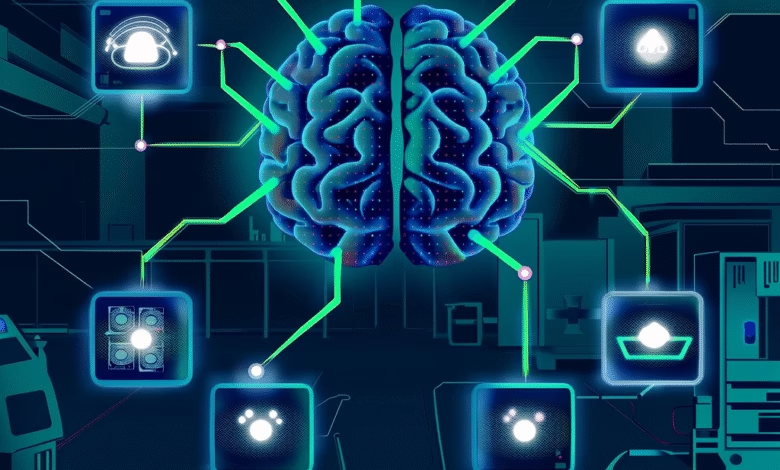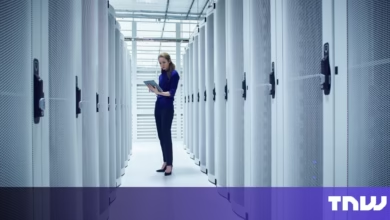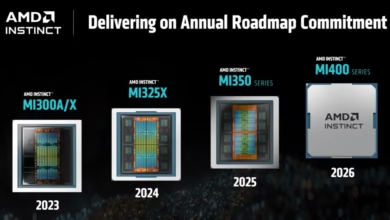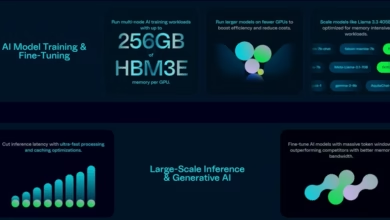AI Infrastructure Shift: Compute to Data, Not Data to Compute

▼ Summary
– VB Transform is a long-standing event where enterprise leaders discuss AI strategy, focusing on critical challenges like data storage for AI performance.
– Medical imaging AI innovations by PEAK:AIO and Solidigm, in collaboration with MONAI, are improving real-time inference and training in hospitals through advanced data infrastructure.
– MONAI, an open-source framework, supports on-premises deployment in healthcare, requiring fast and scalable storage systems to handle sensitive patient data and high-performance AI tasks.
– PEAK:AIO and Solidigm address dual storage needs in healthcare AI: high-capacity SSDs for edge deployments and high-speed solutions for real-time inference and model training.
– Emerging trends show AI deployments increasingly rely on solid-state storage, even at the edge, to efficiently process large datasets and maximize GPU performance in constrained environments.
The future of AI infrastructure is undergoing a radical shift, moving compute power to where data resides rather than transporting massive datasets to centralized processing hubs. This transformation is particularly evident in healthcare, where real-time medical imaging AI demands both speed and security while handling sensitive patient information.
At the forefront of this movement are companies like PEAK:AIO and Solidigm, collaborating with the Medical Open Network for AI (MONAI) to redefine how hospitals deploy AI. MONAI, an open-source framework developed with King’s College London, provides specialized tools for medical imaging, including DICOM support and 3D processing. But its true potential hinges on high-performance storage architectures that keep data accessible without compromising security or efficiency.
Why storage infrastructure is the backbone of clinical AI
Medical AI applications, such as tumor detection and organ classification, require rapid access to vast datasets, often millions of high-resolution scans. Traditional storage solutions struggle under these demands, creating bottlenecks that slow down both training and real-time inference. PEAK:AIO and Solidigm address this by combining software-defined storage with ultra-high-capacity SSDs, enabling hospitals to store and process data locally without sacrificing performance.
Greg Matson of Solidigm highlighted a key breakthrough: storing over two million full-body CT scans on a single node within existing hospital IT setups. This efficiency is critical in space- and power-constrained environments, where deploying AI at the edge, close to where data is generated, can mean faster diagnostics and better patient outcomes.
Balancing capacity and speed for AI workloads
AI pipelines have two distinct storage needs: high-capacity solutions for training datasets and ultra-fast storage for real-time inference. Solidigm’s high-density flash storage meets the first challenge, while PEAK:AIO’s software-defined layer ensures low-latency access for active model processing. Together, they eliminate memory bottlenecks by integrating storage and memory management, allowing AI models to retain critical data in active memory rather than reloading it repeatedly.
Roger Cummings of PEAK:AIO emphasized the importance of intelligent data placement, stating, “The only way to achieve smarter AI is by moving compute closer to the data.” This approach minimizes latency and maximizes efficiency, particularly in edge deployments where every millisecond counts.
The broader implications for enterprise AI
The lessons from healthcare extend to other industries. Modern AI infrastructure increasingly relies on all-flash storage systems to feed GPUs at scale, whether in massive data centers or compact edge environments. As Cummings noted, “Purchasers of AI systems must prioritize hardware that maximizes performance, solid-state storage is no longer optional.”
By rethinking data workflows, focusing on localized processing rather than centralized data movement, organizations can unlock faster, more secure, and scalable AI deployments. The shift from “data to compute” to “compute to data” isn’t just a technical adjustment, it’s a fundamental reimagining of how AI systems interact with the information they rely on.
(Source: VentureBeat)






